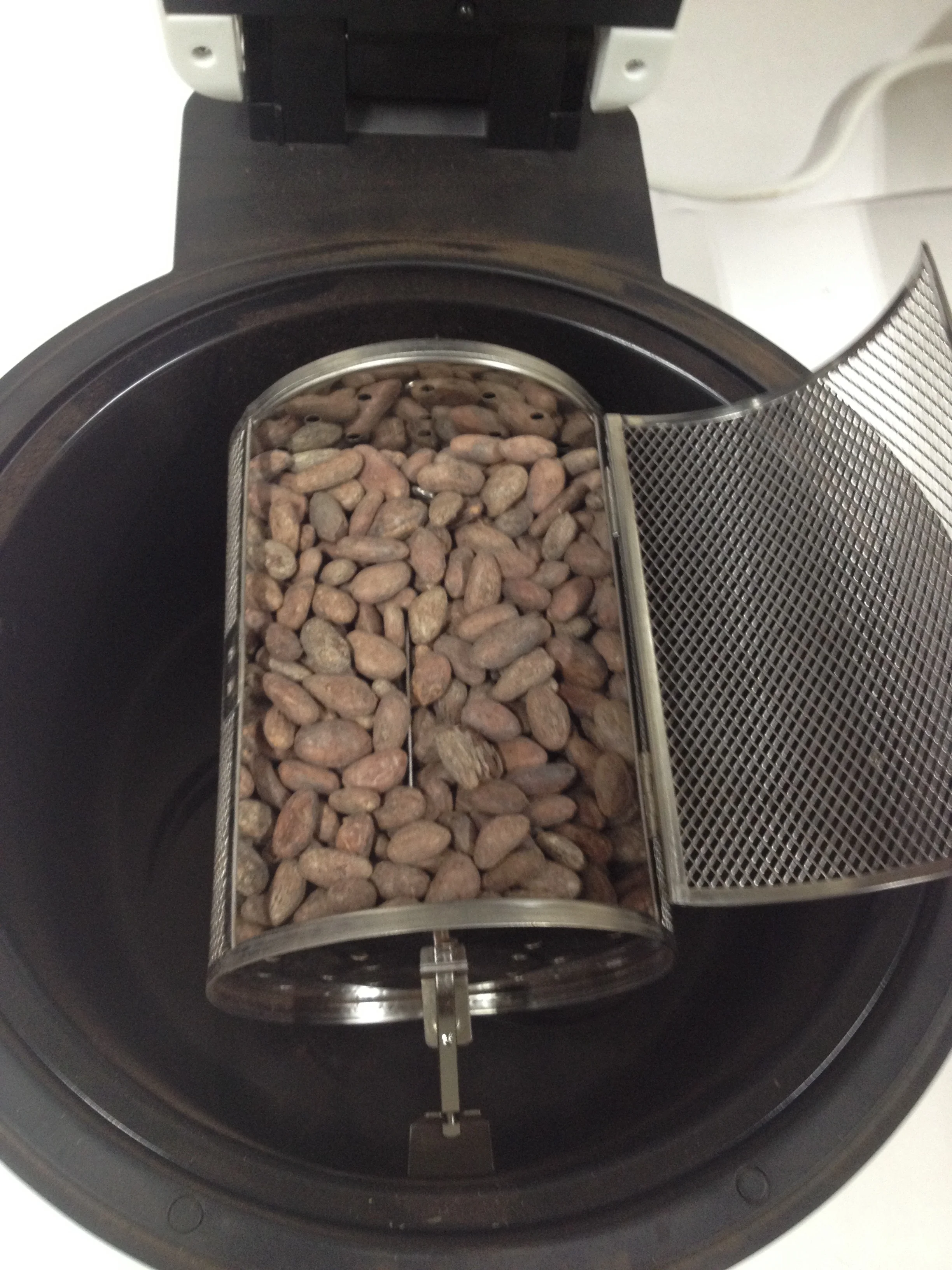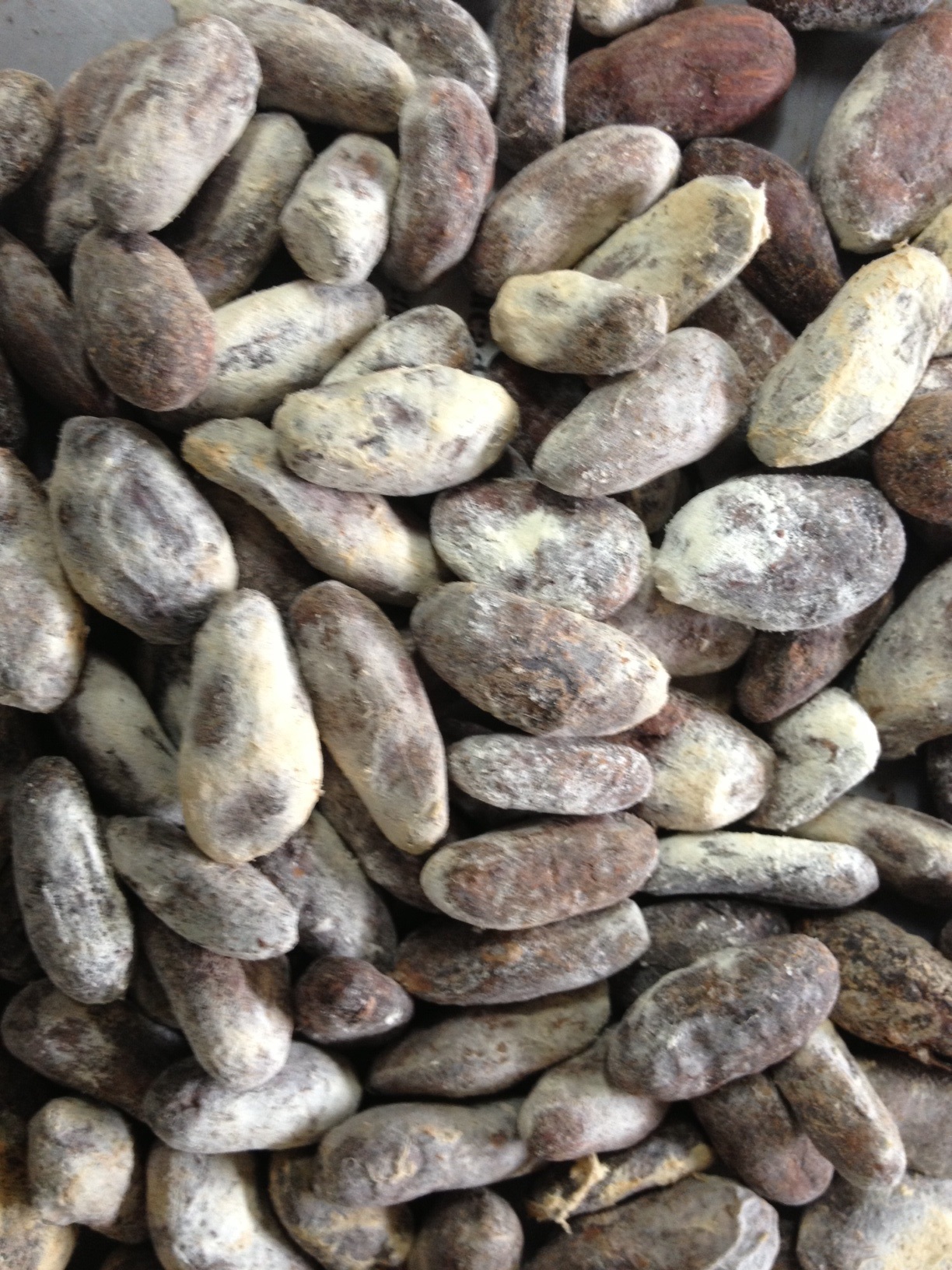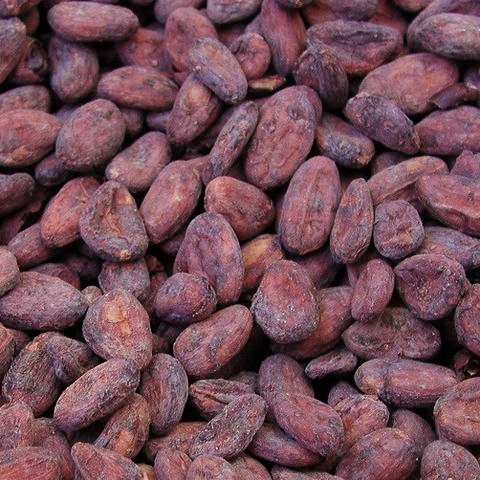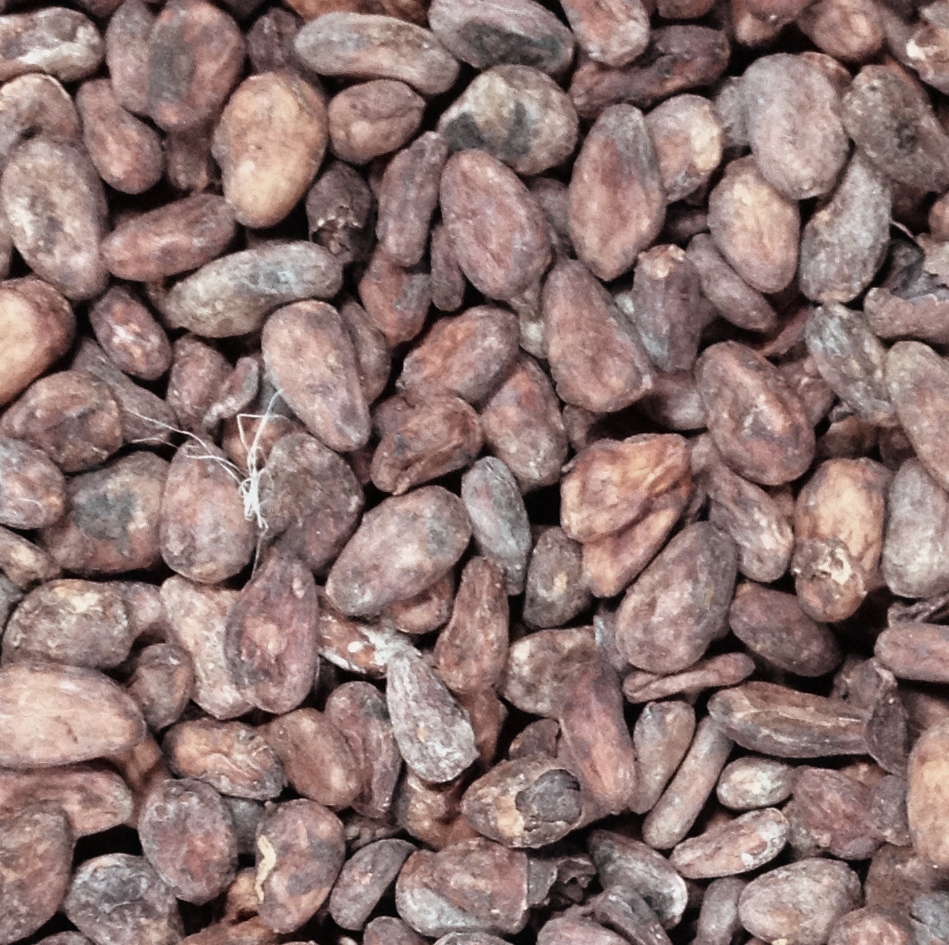A warm welcome and hello the new year everyone. I’ve quite a bit to let you know about so I hope you can take a few minutes to dig in.
Viewing entries in
Products
This is going to be a little rambling with a little of this and a little of that. I’ll get to the Ask the Alchemist after a couple announcements.
How much vanilla extract should I add to my chocolate?
I wrote an article yesterday. It was kind of a venting rant session for me. Call it therapy. But I started having doubts that I might be just railing at the world and it wasn’t useful or delivered the message I wanted.
I am a recent convert (2wks) from my coffee to brewed chocolate, and I don't ever see myself going back. I live in an apartment now, so for the winter this would be strictly oven roasting. Can you be truly successful in a basic oven roasting method?
Welcome to 2021 everyone. I don't have any earth shattering news....and I suspect you'll be relived by that. I know I am. Right? I do though have a few new things. Low key. You're welcome.
This may seem a little irrelevant at first but hear me out:
On 7/9/20 we are trying out a new shipping system
Before we jump into the NINE (9) new beans, I want to let everyone know that the dates are set for the next in depth, full day, Drum Roasting Profile Seminar. Spots (limited to 10 each) are starting to fill up.
The Nutrichef oil press is back in stock.
Milk powder is back in stock
I’m having some roasting trouble and would love to hear your opinion if you get a chance to respond. I’m using a Klarstein air fryer (1400w) to roast 1 kg of beans at a time.
We have a new bean in from Costa Rica, hailing from the Upala region.
“My goal is simple,” he once said. “It is complete understanding of the universe, why it is as it is and why it exists at all.” He spent much of his career searching for a way to reconcile Einstein’s theory of relativity with quantum physics and produce a “Theory of Everything.”
I have been going over your Excel spreadsheet formulator, and the formulator depends on using cocoa liqueur, not nibs. Also, I would also like to use Allulose instead of granulated sugar. Is there a way to "tweak" the formulator to:
Level: Novice
Reading time: 8 minutes
I want to make drinking chocolate. Can you give me a recipe?
I’ve touched on parts of this in the past but now is a good time to bring all the options together.
It's more like cocoa-tea-time but you get the drift I suspect. May I present Alchemist's series #7 - The Long Dark Tea Time of the Soul.
TLDTTOTS is replacing Fire and Brimstone #4. It is a semi-dark, richly chocolate, brewing cocoa. Very possibly the best yet (at least I like it the best). I really enjoy it at 202 F in the Brazen Brewer.
New Direct Trade India is in. It also makes a killer Brewing cocoa. Hot or cold.
4 new Venezuelan are on the way. Fruity Sur del Lago, delicate Cuyagua, silky Canoba, and rich Guanino.
Most likely Belize and Maranon....still finishing the tasting and evaluation.
Testing and Evaluation beans are back.
Finally, I am now offering the Behmor 1600 plus with free shipping (lower 48 USA only and with no beans).
Oh, and some of you may have noticed that Ask the Alchemist went AWOL last week. That happens from time to time when no questions are in the queue. So, what do you want to know?
Level: Novice
Read time: 5 minutes
When I peruse through your selection of cocoa beans for sale, the stark contrast in colors between the different origins always catches my eye. It's pretty interesting to look at for me. But then that's always made me wonder, have you standardized how you take the photo of each bean origin? As in, do you put the same mass of beans in the same container every time? Do you then use a tripod at a set distance away from the beans to take your shot? Is the lighting always consistent? Blah blah blah. The reason I ask is partly because of the motley colors I see, but also some of the origins simply look more attractive to me than others. I see some origins that are a beautiful consistent deep brown like the Madagascar. Then I see some origins that are really gray like the Honduras. The gray origins make me wonder if there's surface mold on those beans. Then I think if there's surface mold, what are those beans like on the inside? Other origins look multi-colored in the picture like the Mexican Chiapas. That makes me wonder if there's uneven fermentation in those beans or are those beans of mixed age or ??? I understand that you personally vet each origin you bring in and vouch for them. And I know you're not supposed to judge a book by it's cover, but for me some of the pictures may not be doing some of your origins much justice. Can you clue me in? Is there a similar story among gray-colored origins versus the multi-colored origins, etc?
Let’s put this on the table. I am a terrible photographer. So terrible that I should not even be allowed to use that term. I take pictures.
But to answer your question, I actually do my very best to standardize how I photograph the beans. They are all in the barrel I pack from, with a fill level near the top. The lighting is mostly the same, as is the distance. But I don’t use a tripod. For years I have known I should set up a white space so there are not shadows (I do know to keep my shadow out of the light source) but as of yet, I have not done it. Clearly.
At this point it is pretty much an ingrained rule for me to take photos of the beans as they come in. Nothing annoys me more than seeing the same repeated image when I am shopping for similar items. And I do my best never to do that. I also do my very best to capture the differences in the beans. Which it seems I am doing as per your comments. Again, there is little I find more annoying than misrepresentation of what is being sold. Some many years ago this slightly bit me when I reused an image of a previous crop year and although the image was of what I was selling, the new crop looked a bit different and some people objected to a small degree. Which I sympathized with. Which is why I now photograph each new bean.
Which brings me to how representative the beans are. Your comments actually reinforce my original statement that I am not a photographer. I think a photographer (a good photographer) does not so much take good photos, but captures what they see AND presents what they see. This is where I fall down. You mention the deep brown of Madagascar. This makes me cringe as to my eye it is a very solid red/brown. Auburn if that can be applied to non-hair colors. That is what I see. That is what I would like display. Likewise, when people visit, I show them the Honduras as the poster child of even and consistently colored beans without even the hint of mold. It’s almost crushing to hear some may think they are moldy. And then we have some beans like Rizek from the Dominica Republic. They look all over the board in the photo, but in person only show some pretty minor variation.
And I simply must address mold. I won’t sell moldy beans. What many people think of as mold is dried mucilage from the fermentation. Some is just crappy photography.
Recently I had two bags of beans arrive. One bag of great. The other was CLEARLY moldy (and not for sale). Not grey. Moldy! Have a look a what mold looks like.
On the other hand, here are two photos of Honduras. What is on the site (left) and how I personally think they look. Not moldy at all to me. The right photo is from my perspective more how they look.
Likewise, here is Madagascar. On the left is what I photographed. On the right is what (I think) is in my mind’s eye of what Madagascar looks like.
And the same goes for consistency. Sometimes lighting just magnifies subtle differences that when viewed in person are just not as stark. Let's do the Chiapas you mention. Left, again, as is, right what I think I see.
Is one more honest or representative than the other? Sure there is more variation than other beans, but when I look in the barrel I don't see the photo on the left.
It’s frustrating. And has been for years. I used try and adjust the color balance to what I saw….but I’m a ham fisted ogre there too and I made matters worse. And does it really matter that you think Madagascar is brown when I think it has a hue of red? I don’t think it does. Do you?
So now I shoot for basic consistency. And accept, for now, that you are right. Maybe I am not doing some of the beans justice. I point out time and again one should not judge a book by its cover (I’m glad you point that out too), try to write up really detailed tasting notes and paint a picture of senses, not just visually.
And at the end of the day, it mostly works. I’d rather be known for being straight shooting and earnest in my presentation of beans than being a photoshop wizard.
What are you thoughts on the matter?
Now that you have a cocoa butter press, have you experimented with different ways of making chocolate (to improve flavor/texture/etc...)? While I realize that "just because you can, doesn't mean you should".... My mind is now spinning with thoughts of things that could be done during the process... pressing butter out of the liqueur before putting it into a melanger to refine/conche... Doing something to warm/process the butter to change its flavor before reintroducing it to the cocoa "powder"... different ways to introduce the sugar into the butter and/or powder?
Well, the first answer is that no, I have not yet experimented with this. I am actually in the middle of a long series of oven roasting tests. So far I have 10 different combinations of roasting beans and nibs in a conventional oven. More on that later.
For those that are missed the 'press' that is being discussed, it is the Nutrichef oil expeller that works on cocoa beans and gives your own cocoa butter.
What can be done? Well, given we are limited to a Melanger, I think some of our options are limited by the necessity to have a flowing product. You could press some cocoa butter out, but you still need to maintain 30-35% fat, so even with a 70% dark chocolate, you are already there and can't remove any cocoa butter.
I am glad you mention 'just because you can, doesn't mean should". We CAN process our chocolate more, but I'm not sure we should. It's one of the big reasons I constantly make it known that I don't find you can make a good chocolate from cocoa powder. It was been processed too hard. But there is also no reason not to try. This is fresh cocoa butter and powder and is 'processed' more gently than others by nature of the small scale. I will certainly try making a batch recombined. For science's sake.
What does come to mind though is a cocoa powder, cream powder chocolate. At 72% fat in the cream powder, you have the ability to get that chocolate flowing again. That is now on the list too.
That all said, I think the first place to start is making your own butter, and using it in 5-10% amounts in your existing recipes and seeing if it makes a difference. I know it can make a radical difference in a milk chocolate where there is 30%. Time to play people!
Finally, I will mention that the resulting cocoa powder is not as fine as commercial powder. But it is pretty fine (straight out it is coarse, but a quick run in a whirly blade grinder gets it fine). And I've been using it in mochas (it mixes nicely with hot water), hot chocolate (ditto with hot water and sugar) and quick mole spicing (I sprinkle it on sauteing chicken and add a little chili sauce).
So, what do you folks want me to test?
First and foremost, I want to present the NutraChef 'cocoa press' oil expeller. You can now make your own cocoa butter at home at the press of a button. I tasted the most amazing milk chocolate made with some fresh pressed Madagascar cocoa. The caramel notes were amazing and fully due to the single origin butter, as it was totally missing from the 'control' made with the natural cocoa butter we offer.

The next new product is a variation on whole milk powder. This is Heavy Cream powder. So, instead of milk chocolate, you can make Cream Chocolate. At 72% butter fat, you can add it directly to an existing dark chocolate recipe without adding any extra cocoa butter like you would with a milk chocolate.
Finally, a new origin. A lovely base note cocoa bean from Trinidad and Tobago. The taste that comes through for me is dried mission fig, date sugar and toasted pecans.
Might I suggest a Single Origin Trinidad Cream chocolate?
2 lbs Trinidad and Tobago roasted cocoa, winnowed to 24 oz.
5 oz Trinidad and Tobago home pressed cocoa butter (results from a 500 gram batch)
1 lb Heavy cream powder
1 lb sugar
This should be unlike ANY chocolate you have ever tried.


























